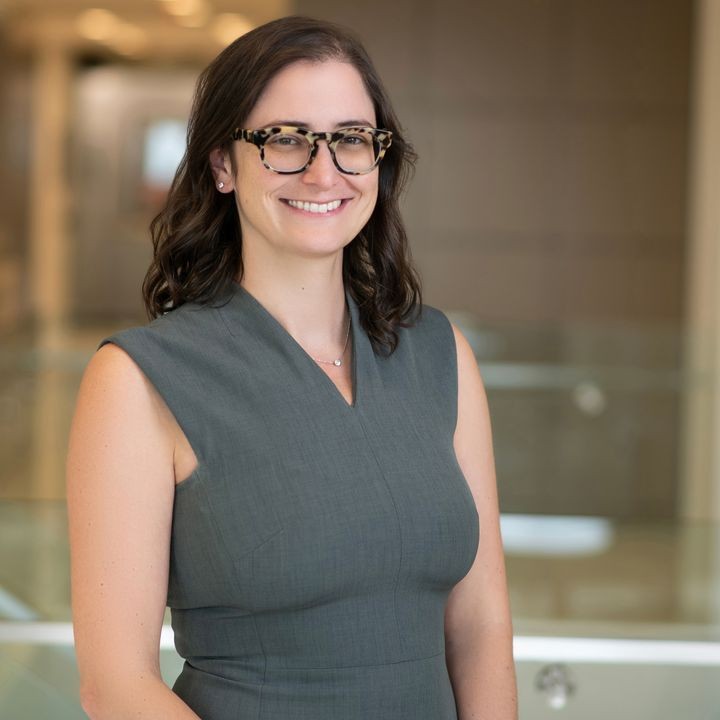SBA Issues PPP Loan Forgiveness FAQ, Providing Further Guidance
Client Alert | 10 min read | 08.13.20
On August 4, 2020, the Small Business Administration (SBA) released a Frequently Asked Questions (FAQs) addressing numerous technical issues on PPP Loan Forgiveness. On August 11, 2020, the FAQs were updated to include additional guidance for recipients of both PPP Loans and Economic Injury Disaster Loans.
The following are the major takeaways from the FAQs:
Loan Forgiveness Application. The FAQs clarify that sole proprietors, independent contractors and self-employed individuals who had no employees at the time of the loan application and who did not include any employee salaries in the computation of average monthly payroll in their loan application form, qualify to use the Loan Forgiveness Application Form 3508EZ or lender equivalent. The FAQs also clarify that copies of signed loan forgiveness documents, as well as E-signatures or E-consents are acceptable if otherwise consistent with applicable law.
Deferred Payment of Loan. Borrowers submitting a loan forgiveness application within ten months of the completion of their Covered Periods are not required to make any payments until the forgiveness amount is remitted to the lender by SBA. To the extent only a portion of the loan is forgiven, or the loan forgiveness application is denied, borrowers must repay the remaining balance of the loan on or before the maturity date (reflecting either a two or five year term). Interest accrues during the time between the disbursement of the loan and the SBA remittance of the forgiveness amount. Borrowers are responsible for paying the accrued interest only on the amount of the loan that is not forgiven. The lender is responsible for notifying the borrower of remittance of the forgiveness amount by the SBA and, if applicable, the date on which borrower’s first payment of the remaining balance is due.
Economic Injury Disaster Loan (EIDL) Deduction: The SBA will deduct the amount of any Economic Injury Disaster Loan (EIDL) advance received by a PPP borrower from the forgiveness amount remitted to the lender. The lender will be able to confirm the amount of the EIDL advance that will be automatically deducted by SBA from the forgiveness payment by reviewing the borrower’s EIDL advance information in the PPP Forgiveness Platform. In the event the amount of the EIDL exceeded the amount of the PPP loan, the borrower will be responsible for repaying the entire amount of the PPP loan.
Eligible Payroll Costs. Prior SBA guidance provided that payroll costs are considered paid on the date that paychecks are distributed or paid via electronic deposit and payroll costs are considered incurred on the day that the pay is earned. The FAQs reiterate the prior guidance that (i) payroll costs incurred but not paid during the borrower’s last pay period of the Covered Period are eligible for forgiveness if paid on or before the next payroll date and (ii) payroll costs incurred before the Covered Period are eligible for forgiveness if paid during the Covered Period. The FAQs also clarify that those borrowers who use a twice a month or less frequent payroll cycle would need to calculate payroll costs for partial pay periods. Borrowers who use a biweekly or more frequent payroll cycle may avoid calculating payroll costs for partial pay periods by electing to use an “Alternative Covered Period” which begins on the first day of the first pay period following the PPP disbursement.
The FAQs clarify that for purposes of calculating cash compensation, borrowers should use the gross amount of such compensation before deductions for taxes, employee benefits payments and similar payments and should include all forms of cash compensation paid to employees, including tips, commissions, bonuses and hazard pay, subject to the per employee limitation of $100,000, on an annualized basis. Employer expenses for employee group health care benefits that are paid or incurred during the Covered Period or Alternative Covered Period are eligible for loan forgiveness. However, neither the employee share of any group health care benefit nor expenses for group health care benefits accelerated from periods outside of the Cover Period or Alternative Covered Period are eligible for loan forgiveness. Employer contributions for employee retirement benefits that are paid or incurred during the Covered Period or Alternative Covered Period are eligible for loan forgiveness. However, such amounts should not include any retirement contributions deducted from employees pay or otherwise paid by employees. In addition, employer contributions for retirement benefits accelerated from periods outside of the Covered Period or Alternative Covered Period are not eligible for loan forgiveness.
Owner Compensation. With respect to determining the amount of owner compensation eligible for loan forgiveness, the FAQs clarified that such determination is dependent on the business type and whether the borrower is using an eight-week or 24-week Covered Period. The FAQs provided specific guidance with respect to C Corporations, S Corporations, Self-employed Schedule C (or Schedule F) filers, General Partners, and LLC owners, set forth below.In addition to caps specific to the business type, the amount of loan forgiveness requested for owner-employees and self-employed individuals’ payroll compensation is capped at $20,833 per individual in total across all businesses in which he or she has an ownership stake. For borrowers that received a PPP loan before June 5, 2020 and elect to use an eight-week Covered Period, this cap is $15,385. If their total compensation across businesses that receive a PPP loan exceeds the cap, owners can choose how to allocate the capped amount across different businesses. The examples below are for a borrower using a 24-week Covered Period.
- C Corporations: The employee cash compensation of a C-corporation owner-employee, defined as an owner who is also an employee (including where the owner is the only employee), is eligible for loan forgiveness up to the amount of 2.5/12 of his or her 2019 employee cash compensation, with cash compensation defined as it is for all other employees. Borrowers are also eligible for loan forgiveness for payments for employer state and local taxes paid by the borrowers and assessed on their compensation, for the amount paid by the borrower for employer contributions for their employee health insurance, and for employer retirement contributions to their employee retirement plans capped at the amount of 2.5/12 of the 2019 employer retirement contribution. Payments other than for cash compensation should be included on lines 6-8 of PPP Schedule A of the loan forgiveness application (SBA Form 3508 or lender equivalent), for borrowers using that form, and do not count toward the $20,833 cap per individual.
- S Corporations: The employee cash compensation of an S-corporation owner-employee, defined as an owner who is also an employee, is eligible for loan forgiveness up to the amount of 2.5/12 of their 2019 employee cash compensation, with cash compensation defined as it is for all other employees. Borrowers are also eligible for loan forgiveness for payments for employer state and local taxes paid by the borrowers and assessed on their compensation, and for employer retirement contributions to their employee retirement plans capped at the amount of 2.5/12 of their 2019 employer retirement contribution. Employer contributions for health insurance are not eligible for additional forgiveness for S-corporation employees with at least a 2% stake in the business, including for employees who are family members of an at least 2% owner under the family attribution rules of 26 U.S.C. 318, because those contributions are included in cash compensation. The eligible non-cash compensation payments should be included on lines 7 and 8 of PPP Schedule A of the Loan Forgiveness Application (SBA Form 3508), for borrowers using that form, and do not count toward the $20,833 cap per individual.
- Self-employed Schedule C (or Schedule F) filers: The compensation of self-employed Schedule C (or Schedule F) individuals, including sole proprietors, self-employed individuals, and independent contractors, that is eligible for loan forgiveness is limited to 2.5/12 of 2019 net profit as reported on IRS Form 1040 Schedule C line 31 (or 2.5/12 of 2019 net farm profit, as reported on IRS Form 1040 Schedule F line 34) (or for new businesses, the estimated 2020 Schedule C (or Schedule F) referenced in question 10 of “Paycheck Protection Program: How to Calculate Maximum Loan Amounts – By Business Type”). Separate payments for health insurance, retirement, or state or local taxes are not eligible for additional loan forgiveness; health insurance and retirement expenses are paid out of their net self-employment income.
- General Partners: The compensation of general partners that is eligible for loan forgiveness is limited to 2.5/12 of their 2019 net earnings from self-employment that is subject to self-employment tax, which is computed from 2019 IRS Form 1065 Schedule K-1 box 14a (reduced by box 12 section 179 expense deduction, unreimbursed partnership expenses deducted on their IRS Form 1040 Schedule SE, and depletion claimed on oil and gas properties) multiplied by 0.9235. Compensation is only eligible for loan forgiveness if the payments to partners are made during the Covered Period or Alternative Payroll Covered Period. Separate payments for health insurance, retirement, or state or local taxes are not eligible for additional loan forgiveness.
- LLC owners: LLC owners must follow the instructions that apply to how their business was organized for tax filing purposes for tax year 2019, or if a new business, the expected tax filing situation for 2020.
Eligible Non-Payroll Costs. The FAQs clarified that (i) eligible business mortgage costs, eligible business rent or lease costs and eligible business utility costs incurred prior to the Covered Period are eligible for forgiveness if paid during the Covered Period and (ii) nonpayroll costs incurred during the Covered Period and paid after the Covered prior are eligible for forgiveness if paid on or before the next regular billing date. The FAQs also clarified that Borrowers electing to use the Alternative Covered Period for purposes of payroll costs, should use the Covered Period, beginning on the date the loan was disbursed, for non-payroll costs.
Non-payroll costs eligible for forgiveness include interest on business mortgages on real or personal property (such as an auto loan) but do not include interest on unsecured credit. Payments made on renewed leases or interest payments on refinanced mortgage loans are eligible for forgiveness if the original lease or mortgage existed prior to February 15, 2020.
With respect to eligible utility costs, the FAQs clarified (i) that the reference in the CARES Act to “utility payment for a service for the distribution of … transportation… for which service began before February 15, 2020” was intended to refer to transportation utility fees assessed by state and local governments, and (ii) the entire electricity bill payment is eligible for loan forgiveness, including supply charges, distribution charges and other charges such as gross receipts taxes, even if such charges are invoiced separately.
FTE Reduction Exceptions. The FAQs clarified that, in calculating its loan forgiveness amount, a borrower may exclude any reduction in FTE employees if the borrower is able to document in good faith (i) an inability to rehire individuals who were employees of the borrower on February 15, 2020 and (ii) an inability to hire similarly qualified individuals for unfilled positions on or before December 31, 2020. Borrowers are required to inform the applicable state unemployment insurance office of any employee’s rejected rehire offer within 30 days of the employee’s rejection of the offer. The documents that borrowers should maintain to show compliance with this exemption include the written offer to rehire an individual, a written record of the offer’s rejection, and a written record of efforts to hire a similarly qualified individual. The FAQs also clarified that a seasonal employer that elects to use a 12-week period between May 1, 2019 and September 15, 2019 to calculate its maximum PPP loan amount must use the same 12-week period as the reference period for calculation of any reduction in the amount of loan forgiveness.
The FAQs clarified that when a borrower is calculating the FTE Reduction Exceptions in Table 1 of the PPP Schedule A Worksheet on the Loan Forgiveness Application (SBA Form 3508 or lender equivalent), borrowers should include employees who made more than $100,000 in 2019 (those listed in Table 2 of the PPP Schedule A Worksheet). The FTE Reduction Exceptions apply to all employees, not just those who would be listed in Table 1 of the Loan Forgiveness Application (SBA Form 3508 or lender equivalent).
Salary/Hourly Wage Reduction Safe Harbor. In the event the salary or hourly wage of a covered employee (defined as an individual who (i) was employed by the borrower at any point during the Covered Period or Alternative Payroll Covered Period and whose principal place of residence is in the United States; and (ii) received compensation from the borrower at an annualized rate less than or equal to $100,000 for all pay periods in 2019 or was not employed by the borrower at any point in 2019) is reduced by more than 25% during the Covered Period or the Alternative Payroll Covered Period, the portion of such reduction in excess of 25% reduces the eligible forgiveness amount unless the borrower satisfies the Salary/Hourly Wage Reduction Safe Harbor (as described in the Loan Forgiveness Application (SBA Form 3508 or lender equivalent)). For purposes of calculating reductions in the loan forgiveness amount, the borrower should only take into account decreases in salaries or wages.
Crowell & Moring will continue to monitor and provide updates regarding developments in the PPP.
Contacts
Insights
Client Alert | 6 min read | 12.22.25
Emerging Legal Issues for Skilled Nursing Facilities in New York: A Year in Review
The regulatory environment for skilled nursing facilities (SNFs) is shifting rapidly, creating challenges and uncertainties for providers across the country—and especially those in New York. While the Trump administration has rolled back federal nurse staffing mandates, state-level requirements remain in full force, and new federal ownership disclosure rules are set to take effect in January 2026. Even as federal enforcement slows, state regulators appear primed to intensify oversight of nursing home operators by enhancing Certificate of Need (CON) review processes.
Client Alert | 14 min read | 12.22.25
European Commission Proposes Biotech Act to Boost Health Biotechnology in the EU
Client Alert | 11 min read | 12.22.25
European Commission Proposes Simplifying the Rules on EU Medical and In-Vitro Diagnostic Devices
Client Alert | 3 min read | 12.22.25
Second Circuit Expands District Court Review of Magistrate Judge Report and Recommendations





